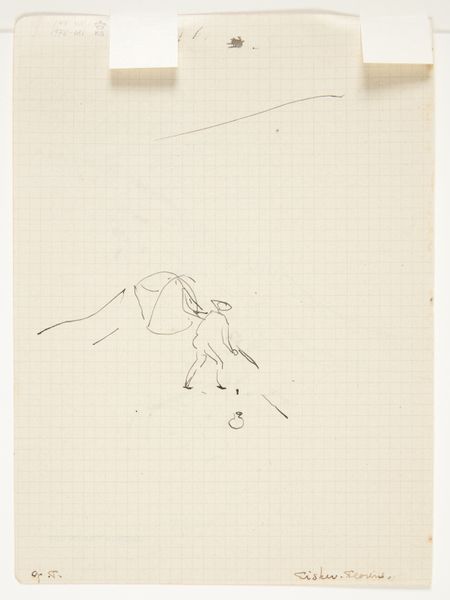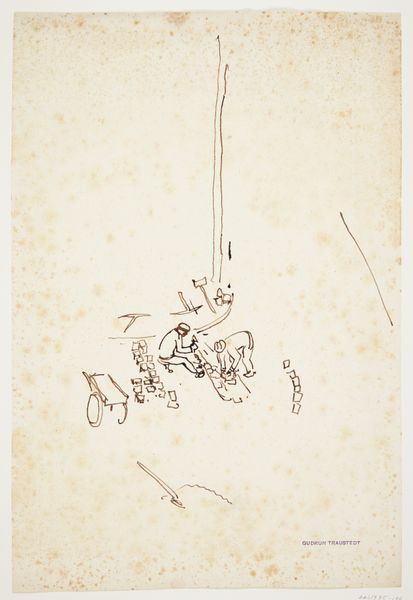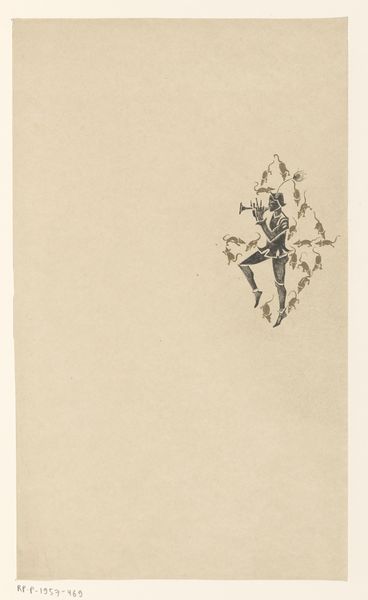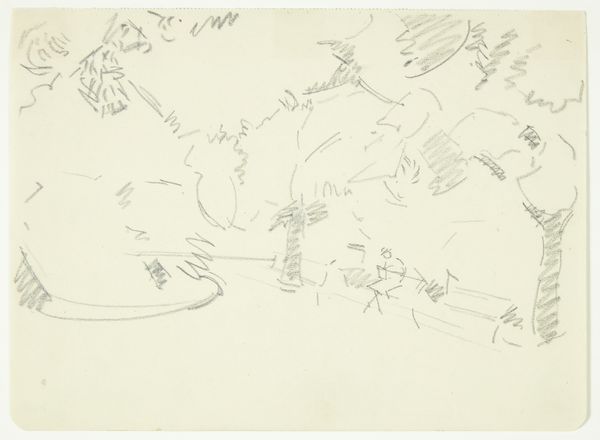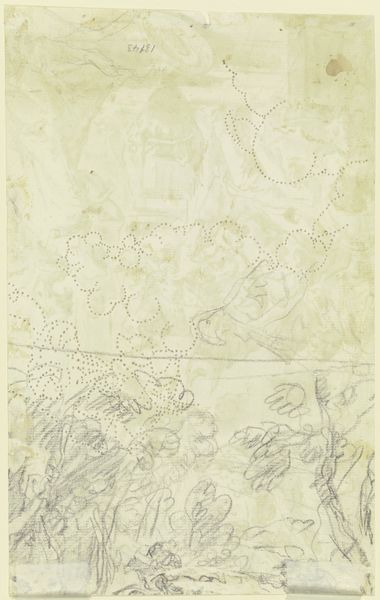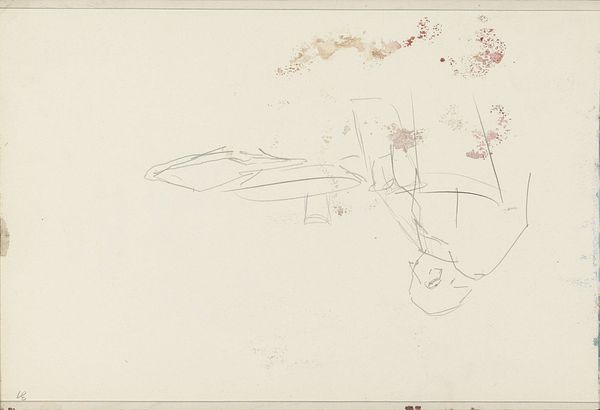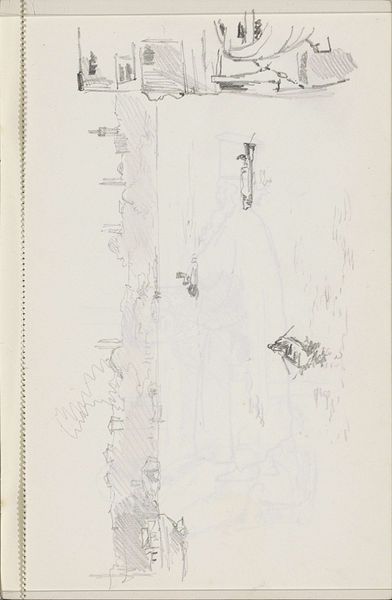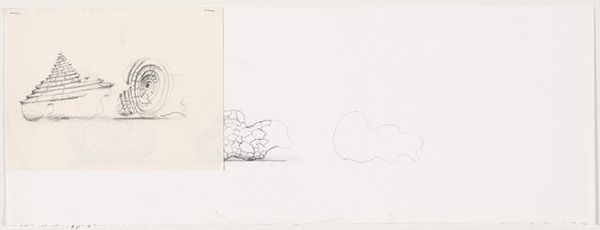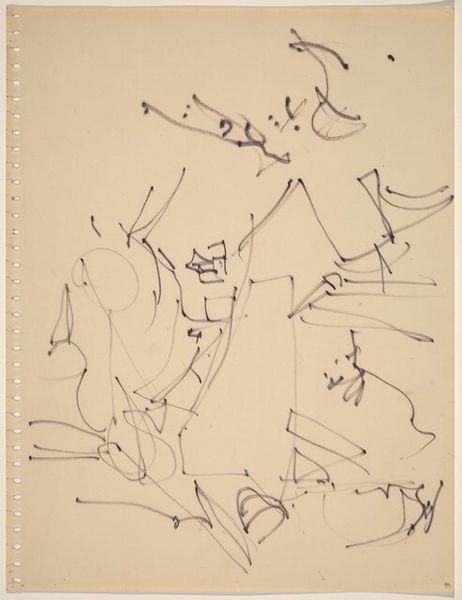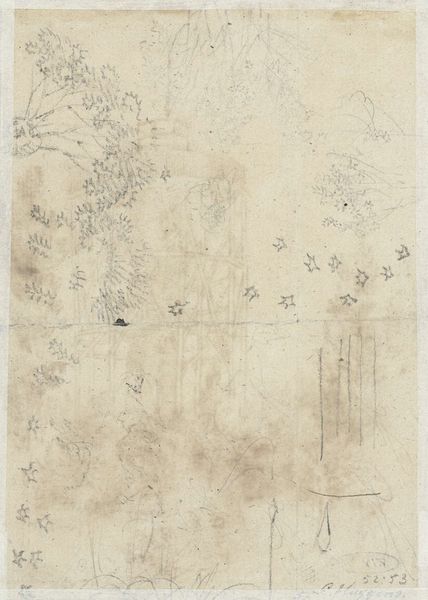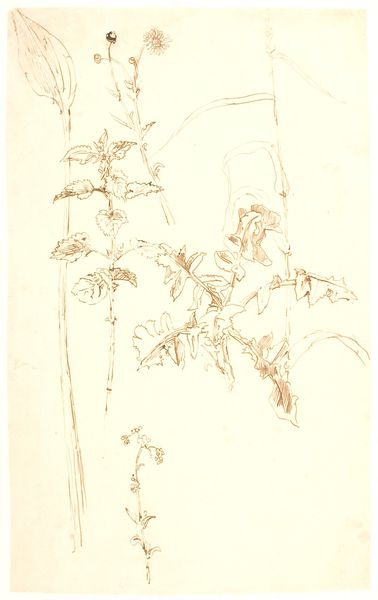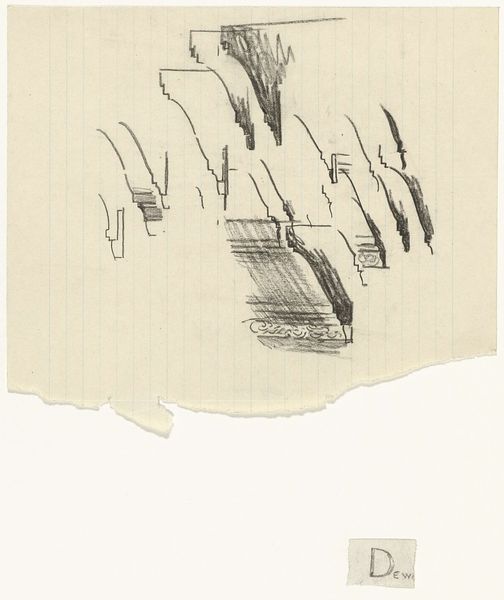
drawing, ink, pencil
#
drawing
#
landscape
#
ink
#
pencil
Dimensions: 206 mm (height) x 150 mm (width) (bladmaal)
Editor: This is "Bjergene ved Ravello" – "The Mountains near Ravello" – by Gudrun Traustedt, made between 1920 and 1924 using pencil and ink. It feels incredibly delicate; the drawing itself is faint, and even the grid of the paper shows through. What strikes you about this composition? Curator: I am intrigued by how the structure provides a scaffold to represent the contours and textures that compose the scene. Note how the geometric grid contrasts against the free, organic lines of the landscape. It invites a consideration of how artistic intention and natural form collide and co-exist. Does the underlying structure alter the viewer's reception? Editor: That's a fascinating point. I hadn't considered how the grid influences the composition. The artist could have chosen plain paper but chose a grid instead. It also looks unfinished, somehow. It gives the landscape an ordered feel, like something meticulously planned. How does that affect its aesthetic? Curator: I would argue that the structured underlay adds a layer of visual complexity that would otherwise be absent. The grid provides the artist and, subsequently, the audience with a metric and guide. Look at the use of space: how each component uses angles, lines, intersections. Traustedt transforms the natural scene to an orchestrated structure through deliberate arrangements. How, or why, do you suppose that geometry is overlaid in a natural, uneven setting? Editor: I see your point! The superimposition is very noticeable. Maybe it’s about control – imposing order onto the natural world? Or an architect’s drafting plans? I don’t know; I have to consider my view that its presence is just for initial proportions and nothing else. Thanks; it's certainly a different way to look at a drawing. Curator: It also could reflect modernism's interest in fragmentation and reassembly. Ultimately, the artwork's effectiveness lies in the tension it creates.
Comments
No comments
Be the first to comment and join the conversation on the ultimate creative platform.
